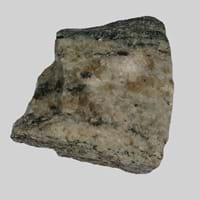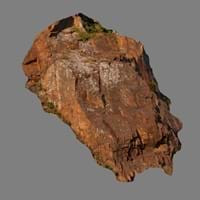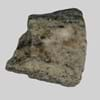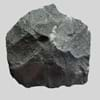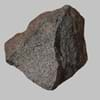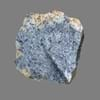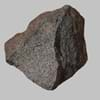Definition
Litchfieldite is a rare igneous rock which is coarse-grained, foliated and a variety of nepheline syenite, sometimes also called as nepheline syenite gneiss or gneissic nepeheline syenite
Granulite is fine to medium grained metamorphic rock with a granular of polygonal crystals.
Origin
USA
Central Europe
Discoverer
Bayley
Unknown
Etymology
From its occurrence at Litchfield, Maine, USA
From Latin granulum, a little grain or fine grained
Class
Igneous Rocks
Metamorphic Rocks
Sub-Class
Durable Rock, Medium Hardness Rock
Durable Rock, Hard Rock
Group
Plutonic
Not Applicable
Other Categories
Coarse Grained Rock, Opaque Rock
Coarse Grained Rock, Medium Grained Rock, Opaque Rock
Texture
Granular
Granoblastic
Color
Brown, Buff, Cream, Green, Grey, Pink, White
Black, Brown
Durability
Durable
Durable
Scratch Resistant
Yes
Yes
Appearance
Banded and Foilated
Veined or Pebbled
Interior Uses
Countertops, Decorative Aggregates, Flooring, Interior Decoration
Bathrooms, Countertops, Decorative Aggregates, Entryways, Flooring, Homes, Hotels, Interior Decoration, Kitchens, Stair Treads
Exterior Uses
As Building Stone, As Facing Stone, Garden Decoration
As Building Stone, As Facing Stone, Garden Decoration, Office Buildings, Paving Stone
Other Architectural Uses
Curbing
Curbing
Construction Industry
As Dimension Stone, Cement Manufacture, Construction Aggregate, for Road Aggregate, Landscaping, Making natural cement, Manufacture of Magnesium and Dolomite Refractories, Production of Glass and Ceramics
As Dimension Stone, Building houses or walls
Medical Industry
Not Yet Used
Not Yet Used
Antiquity Uses
Artifacts, Monuments, Sculpture
Artifacts, Monuments, Sculpture
Commercial Uses
Creating Artwork
Curling, Gemstone, Laboratory bench tops, Soil Conditioner, Tombstones
Types
Borolanite and Litchfieldite
Not Available
Features
Application of acids on the surface causes cloudy frosting, Available in Lots of Colors and Patterns, Dissolves in hydrochloric acid, Is one of the oldest rock
Clasts are smooth to touch
Archaeological Significance
Famous Monuments
Data Not Available
Data Not Available
Famous Sculptures
Data Not Available
Data Not Available
Pictographs
Used
Not Used
Petroglyphs
Used
Not Used
Formation
Litchfieldite is a fine-grained, hard rock which is a type of metasomatite, essentially altered basalt. It forms with or without crystallization, either below the surface as intrusive rocks or on the surface as extrusive rocks.
Granulite is a fine-grained granular metamorphic rock in which the main component minerals are feldspars and quartz and forms at high temperature and pressure conditions.
Mineral Content
Albite, Amphibole, Biotite, Cancrinite, Feldspar, Hornblende, Plagioclase, Pyroxene, Sodalite
Amphibole, Biotite, Feldspar, Hornblade, Micas, Muscovite or Illite, Plagioclase, Quartz
Compound Content
Aluminium Oxide, CaO, Iron(III) Oxide, FeO, Potassium Oxide, MgO, MnO, Sodium Oxide, Phosphorus Pentoxide, Silicon Dioxide, Titanium Dioxide
Aluminium Oxide, CaO, Carbon Dioxide, Iron(III) Oxide, FeO, Potassium Oxide, MgO, MnO, Sodium Oxide, Phosphorus Pentoxide, Sulfur Dioxide, Titanium Dioxide
Types of Metamorphism
Burial Metamorphism, Cataclastic Metamorphism, Contact Metamorphism, Impact Metamorphism
Not Applicable
Types of Weathering
Biological Weathering, Mechanical Weathering
Biological Weathering, Chemical Weathering
Types of Erosion
Coastal Erosion, Water Erosion, Wind Erosion
Chemical Erosion, Water Erosion, Wind Erosion
Grain Size
Coarse Grained
Medium to Coarse Grained
Fracture
Conchoidal to Uneven
Not Available
Porosity
Less Porous
Very Less Porous
Luster
Greasy to Dull
Vitreous
Toughness
Not Available
Not Available
Specific Gravity
2.6
2.8-3.0
Transparency
Translucent to Opaque
Opaque
Density
2.6 g/cm3
3.06-3.33 g/cm3
Specific Heat Capacity
Not Available
Resistance
Heat Resistant, Impact Resistant, Wear Resistant
Heat Resistant, Wear Resistant
Deposits in Eastern Continents
Asia
Not Yet Found
China, India, Iran, Saudi Arabia, Sri Lanka, Taiwan, Thailand, Turkey, Vietnam
Africa
South Africa
Angola, Egypt, Madagascar, Nigeria, South Africa
Europe
Finland, Norway, Portugal
Austria, Belgium, Finland, France, Germany, Italy, Norway, Sardinia, Spain, Switzerland, The Czech Republic, Venezuela
Others
Not Yet Found
Not Yet Found
Deposits in Western Continents
North America
Canada
Canada, USA
South America
Brazil
Not Yet Found
Deposits in Oceania Continent
Australia
Not Yet Found
Not Yet Found
